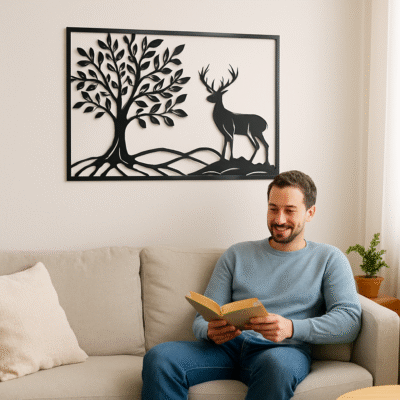When you hear the term landscape design, you might think of lush gardens, neatly trimmed hedges, or beautiful outdoor spaces in magazines. But landscape design is more than just placing plants and adding a few decorations—it’s a thoughtful process that combines art, science, and functionality to create outdoor spaces that are both beautiful and practical.
In this beginner’s guide, we’ll explore what landscape design really means, why it matters, the basic elements involved, and how hiring professional landscapers—like the team at Forever Green HCS in Melbourne—can make all the difference in transforming your space.
What Is Landscape Design?
Landscape design is the art and science of arranging outdoor elements—like plants, terrain, structures, and pathways—to create aesthetically pleasing and functional environments. It involves planning, designing, and often executing a vision for your outdoor area, whether it’s a small residential garden or a large commercial property.
This process includes not just planting flowers or mowing the lawn, but designing how outdoor spaces will be used, how they will look across seasons, and how they can complement your home or business.
Why Landscape Design Matters
A well-designed landscape doesn’t just look good—it adds real value to your property and quality of life. Here are a few reasons why landscape design is important:
-
Increased Property Value: Professionally landscaped homes can increase in value by as much as 15%, according to various real estate studies.
-
Improved Functionality: Design helps you use every inch of your outdoor space efficiently, whether for entertaining, relaxing, or gardening.
-
Environmental Benefits: Strategic planting can reduce erosion, improve air quality, support local wildlife, and even lower energy costs by providing natural insulation.
-
Enhanced Curb Appeal: A beautiful yard creates a great first impression and boosts the aesthetic of your entire property.
The Core Elements of Landscape Design
Understanding the basic elements of landscape design can help you appreciate the work that goes into creating a balanced and beautiful outdoor space. These elements are:
- Line: Lines help guide the eye and direct movement. For example, the curve of a garden bed or a straight pathway can subtly guide how someone navigates a space.
- Form: This refers to the shape of plants, structures, or layout. Trees, shrubs, fountains, and furniture all contribute to the form and flow of your landscape.
- Color: Color adds emotion and personality to a garden. Seasonal changes in foliage and blooms provide variety and interest throughout the year.
- Texture: Different plants and materials have unique textures—like the rough bark of a tree versus the soft petals of a flower. These contrasts add depth and dimension.
- Scale: Scale ensures that the size of elements—like plants, pathways, and furniture—are proportionate and harmonious within the space.
- Balance: Designs can be symmetrical (formal balance) or asymmetrical (informal balance), but the key is ensuring the space feels stable and cohesive.
The Landscape Design Process
A typical landscape design process involves the following steps:
- Site Analysis: This includes assessing soil quality, drainage, sunlight exposure, and existing vegetation or structures.
- Concept Development: The designer creates sketches or concepts based on your goals, preferences, and the site conditions.
- Design Plan: A detailed plan is drawn, which includes plant selections, hardscape materials (like pavers or retaining walls), and structural elements (like pergolas or water features).
- Installation: With a final design in place, the landscaping team brings the vision to life through planting, construction, and finishing touches.
- Maintenance Planning: An often-overlooked part of landscape design, maintenance planning ensures your garden or yard stays beautiful and healthy over time.
DIY vs. Hiring a Professional
While DIY landscaping can be rewarding, it can also be overwhelming. You may face challenges with plant selection, design balance, or even long-term maintenance. That’s where professional landscapers come in.
Why Hire a Professional?
-
Expert Knowledge: They understand local soil, weather conditions, and plant species that thrive in your area.
-
Creative Vision: Professionals combine artistic flair with practical know-how to create designs that last.
-
Time & Cost Efficiency: Avoid costly mistakes and get the job done right the first time.
-
Ongoing Support: Many landscaping companies offer ongoing maintenance to keep your outdoor space in top shape.
Hire the Best Landscapers in Melbourne – Forever Green HCS
If you’re in Melbourne and dreaming of a landscape makeover, Forever Green HCS is your go-to solution. With years of experience in transforming outdoor spaces across Melbourne, their team combines creativity, expertise, and attention to detail to deliver stunning results.
Whether you’re looking to refresh your front yard, design a sustainable garden, or create an outdoor entertainment area, Forever Green HCS provides custom solutions that fit your vision and lifestyle.
Why Choose Forever Green HCS?
-
✅ Tailored landscape designs
-
✅ Expert knowledge of local plants and conditions
-
✅ Reliable and professional service
-
✅ Affordable pricing with no hidden costs
Ready to transform your garden? Contact Forever Green HCS, Melbourne’s trusted landscaping specialists, and bring your outdoor vision to life.
Final Thoughts
Landscape design is more than just planting flowers—it’s a comprehensive approach to creating beautiful, functional, and sustainable outdoor spaces. Whether you’re starting from scratch or refreshing an existing garden, understanding the basics of landscape design can help you make informed choices.




